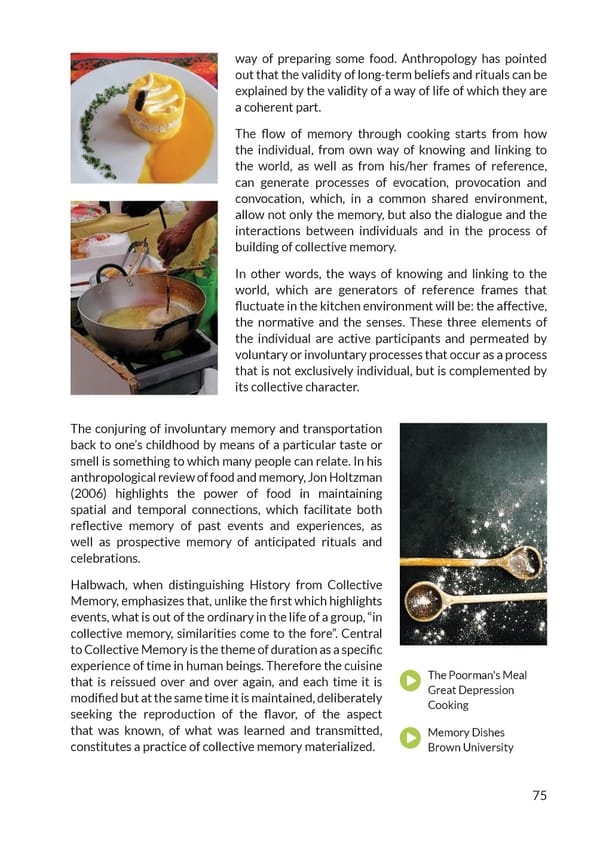way of preparing some food. Anthropology has pointed out that the validity of long-term beliefs and rituals can be explained by the validity of a way of life of which they are a coherent part. The flow of memory through cooking starts from how the individual, from own way of knowing and linking to the world, as well as from his/her frames of reference, can generate processes of evocation, provocation and convocation, which, in a common shared environment, allow not only the memory, but also the dialogue and the interactions between individuals and in the process of building of collective memory. In other words, the ways of knowing and linking to the world, which are generators of reference frames that fluctuate in the kitchen environment will be: the affective, the normative and the senses. These three elements of the individual are active participants and permeated by voluntary or involuntary processes that occur as a process that is not exclusively individual, but is complemented by its collective character. The conjuring of involuntary memory and transportation back to one’s childhood by means of a particular taste or smell is something to which many people can relate. In his anthropological review of food and memory, Jon Holtzman (2006) highlights the power of food in maintaining spatial and temporal connections, which facilitate both reflective memory of past events and experiences, as well as prospective memory of anticipated rituals and celebrations. Halbwach, when distinguishing History from Collective Memory, emphasizes that, unlike the first which highlights events, what is out of the ordinary in the life of a group, “in collective memory, similarities come to the fore”. Central to Collective Memory is the theme of duration as a specific experience of time in human beings. Therefore the cuisine The Poorman's Meal that is reissued over and over again, and each time it is Great Depression modified but at the same time it is maintained, deliberately Cooking seeking the reproduction of the flavor, of the aspect that was known, of what was learned and transmitted, Memory Dishes constitutes a practice of collective memory materialized. Brown University 75
 MemoryHandbook new Page 74 Page 76
MemoryHandbook new Page 74 Page 76